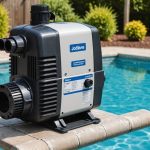Assessing Old Carpets for Allergens
Old carpets can harbour a myriad of allergens that may impact indoor air quality and health. Identifying these carpet allergens requires an understanding of the most common culprits. Dust mites, pet dander, and mould are typical allergens found in old carpets.
A thorough visual inspection is crucial in allergen assessment. While the naked eye cannot see many allergens, visual cues such as stains, discolouration, or visible dust can indicate potential issues. Regular inspections help in identifying areas that need targeted cleaning or replacement.
Have you seen this : Seamless transitions: expert strategies for managing multi-generational relocations in the uk
For precise results, allergen assessment through the use of dedicated testing kits is advisable. These kits can detect a range of allergens present in carpets, providing a clear evaluation of your carpet’s condition. They measure specific allergen levels from dust collected in the carpet, offering valuable insight into what might be causing allergy symptoms.
Ultimately, combining visual inspections with allergen testing kits offers a comprehensive approach to managing and reducing allergens in your home. Whether it’s ensuring a healthier living space or taking preventative measures, addressing allergens in old carpets is an important step.
In the same genre : Safe and secure: top strategies for moving your antique doll collection across the uk
Cleaning Techniques for Allergy Management
Managing allergens in carpets is essential for maintaining a healthy living environment. Vacuuming plays a pivotal role in reducing allergens like dust mites and pet dander. Regular vacuuming with a high-efficiency particulate air (HEPA) filter is recommended, as it captures more particles compared to standard vacuums.
For deeper cleaning, consider steam cleaning or dry cleaning methods. Steam cleaning uses hot water to effectively remove dirt and allergens embedded within carpet fibres. It’s particularly useful because the heat can help eliminate dust mites. Alternatively, dry cleaning involves minimal moisture, which can be beneficial in preventing mould growth in carpets.
It’s crucial to use hypoallergenic cleaning products and pet-safe solutions to avoid introducing new allergens. These products are designed to be gentle on sensitive individuals while providing a thorough clean. Many eco-conscious individuals opt for green cleaning solutions, which are free from harsh chemicals and fragrances.
For those considering an extra layer of allergen defense, applying an anti-allergen spray post-cleaning can be beneficial. It helps neutralise allergens, providing longer-lasting protection. By adopting these cleaning techniques, individuals can manage and reduce allergens effectively, creating a healthier home environment.
Choosing Allergy-Friendly Flooring Alternatives
Selecting the right flooring can significantly impact allergy management. Opting for allergy-friendly flooring is an excellent step towards creating a healthier living environment. Traditional carpets often trap allergens, so consider low-allergen materials such as laminate, hardwood, or tile. These options are easier to clean and maintain, reducing allergen accumulation.
Choosing area rugs over wall-to-wall carpets can further aid in minimising allergens. Rugs can be easily removed and cleaned, allowing for regular maintenance and a rotation of styles. This adaptability makes them a practical choice for allergy sufferers looking to maintain both hygiene and aesthetics in their spaces.
Consider eco-friendly flooring materials that promise not only a reduction in allergens but also an embrace of sustainability. Many manufacturers offer flooring solutions crafted from natural materials that release fewer volatile organic compounds (VOCs), providing a healthier home atmosphere.
When deciding on flooring, consider the local climate, particularly in regions prone to higher humidity levels that might encourage mould growth. By evaluating your options and keeping allergy concerns in mind, you can choose flooring that will promote a healthier home and an improved quality of life.
Engaging Professional Cleaning Services
Hiring professional carpet cleaning services is advantageous for those striving to manage allergens effectively. Specialist services offer deep-cleaning solutions beyond regular household methods. They come equipped with industrial-grade equipment that can extract deeply embedded allergens, dust mites, and dirt. The expertise they bring ensures a more thorough cleaning, crucial in maintaining a healthy environment, especially for allergy sufferers.
When selecting a professional allergen removal service, consider their credentials and reputation. Look for companies that use anti-allergen products, which are effective in minimising potential reactions. Additionally, inquire about their cleaning methods; services offering steam or hot water extraction are often preferable due to their efficiency in allergen removal.
Cost is understandably a factor; prices can vary, so evaluate what’s included in a quote. Some companies include value-added services such as carpet protection treatments or hypoallergenic cleaning solutions, providing extra benefits at no additional cost.
Overall, professional cleaning services can be a valuable ally in maintaining your carpet and reducing allergens, ensuring a healthier living space. Prioritising thorough, professional care can lead to long-term benefits, enhancing both the health of your home and its occupants.
Checklist for Moving with Allergies
Moving can be challenging, especially for those managing allergies. To facilitate a seamless transition, an allergy management checklist is indispensable. Begin by identifying allergen-prone areas in your current home and take note of what needs addressing in the new place. Essential cleaning prior to moving in can prevent settling into an allergen-rich environment.
Create a step-by-step guide focusing on crucial aspects, such as ensuring that furniture and belongings are allergen-free. This requires cleaning and using protective covers for mattresses and upholstered furniture. As a preventative measure, unpack in a clean and allergen-controlled space.
At the new location, assess air quality and consider installing air purifiers or improved filtration systems. These can significantly reduce allergens like dust and pollen, crucial during seasonal peaks.
When arranging logistical aspects, inform the moving company of any specific allergy concerns. This includes sensitivity to dust or pet dander, which might be present in transport vehicles. Request hypoallergenic materials if available.
Consider the environmental specifics of the new area, such as local plant life or prevalent allergens, to prepare accordingly with necessary medication or preventive strategies. By systematically managing these elements, those with allergies can transition smoothly to a new home environment.
UK-Specific Allergens and Environmental Considerations
Transitioning to a new environment can pose unique allergen challenges, especially in the UK. Various environmental allergy triggers are specific to this region. Individuals need to be aware of such regional allergens for effective management.
Common UK Allergens
In the UK, mould is a prevalent allergen due to the damp climate, often leading to indoor spores. Another significant allergen is pollen, with trees, grasses, and weeds contributing seasonally. Awareness of local foliage is crucial to understanding potential pollen sources and timing.
Seasonal Trends and Relocation Timing
The allergen calendar in the UK sees higher pollen counts typically in late spring to early autumn. Grasses tend to release pollen from May to July, while tree pollen peaks earlier. Planning a move or outdoor activities around these periods can help mitigate allergy symptoms.
Managing Allergies in the UK Climate
Given the humid climate, consider indoor air quality control measures to reduce mould exposure. Using dehumidifiers, maintaining proper ventilation, and prompt leak repairs are essential actions. Additionally, keep windows closed during high pollen seasons and regularly clean HVAC filters.
By understanding and adapting to local allergens, individuals can significantly alleviate allergy symptoms and create a comfortable living environment.
UK-Specific Allergens and Environmental Considerations
Understanding UK allergens is crucial when managing allergies, especially in the damp climate that characterises this region. Mould is a prevalent allergen found indoors, often exacerbated by poor ventilation. It flourishes in moist conditions typical of the UK, leading to increased indoor spore levels. Additionally, the changing seasons significantly influence local allergens, with pollen from trees, grasses, and weeds presenting a challenge from spring through to late autumn.
Common UK Allergens
In the UK, individuals frequently encounter allergens such as mould spores due to indoor dampness and pollen, primarily from local vegetation. A thorough environmental allergy triggers assessment can help identify these allergens so that preventive measures can be enacted to mitigate symptoms effectively.
Seasonal Trends and Relocation Timing
The UK sees notable seasonal trends; tree pollen peaks early in the year, while grass pollen dominates late spring through summer. Planning relocations around these peaks can help manage symptoms more efficiently.
Managing Allergies in the UK Climate
To combat mould, control your indoor environment by using dehumidifiers and maintaining proper ventilation. Regular home maintenance, including mending leaks promptly and cleaning HVAC systems, can also reduce allergen exposure significantly. Understanding the unique environmental challenges in the UK can enhance one’s ability to manage allergies effectively.





